A Plethora of events is ready to rock the Oil Markets!
“There is no free market in Oil”- Peter Defazio.
In forms unbeknownst to humanity, Mother Nature is responsible for the rapid advancement of the human race witnessed in the last century. Today we are at the centre of a fierce disagreement about phasing-out fossil fuels; however, we can’t deny the fact that the discovery of oil and gas was one of the critical milestones that enabled humanity to achieve modern-era success.
Over the span of a million years, by the combination of pressure and heat, Mother Nature transformed the plant and animal remains (covered under layers of rock, sand and silt) into crude oil. As various geographies around the world had diverse flora and fauna, thus the crude oil formed was of distinct varieties.
The oil industry uses crude oil’s density and sulfur content to categorize it into various categories. The oil can be grouped by sulfur content as sweet or sour and by density as heavy or light. Based on these metrics, crude oil is classified around the world as:
- Heavy/Sweet
- Heavy/Sour
- Medium/Sweet
- Medium/Sour
- Light/Sweet
- Light/Sour
Depending on the chemical profile and location of crude oil (production), different benchmarks have been developed worldwide. The three major global benchmarks of crude oil are:
- West Texas Intermediate (WTI): Light sweet oil with the delivery point at Cushing.
- North Sea Brent Crude: Light sweet oil with the delivery point at Sullom Voe, Scotland.
- Dubai: Medium Sour with delivery points across the Middle East (priced mainly for Asian buyers)
The different crude blends and the refineries set up across the world to handle them creates an anomaly which might cause short-term chaos in the oil market when the embargo on Russian oil kicks in on December 5th and the products ban comes online in February.
Let’s dig in!
Russian Oil, Embargo and Oil Price Cap!
The Russians primarily export the Urals (heavy sour), which is inferior to the Brent Crude. As a result, historically, the Urals have traded at a petite discount of $2-$3 /b to the Brent Crude.
However, lately, as Russia was pounded with sanctions, the discount on the Urals significantly rose to more than $25/b and has now eased to $15–18/b.
Nevertheless, the sanctions were ineffective in curbing Russian oil production materially, which has been resilient despite the intense severity of the sanctions. Ironically, as I explained in my newsletter: “Cost of War”, India and China have uncovered a way to circumvent the “re-insurance problem” that became the thorn in the flesh for the trade/export of Russian oil.
As we get closer to the embargo deadline when the EU bans seaborne imports from Russia, the EU has intensified talks about the Russian Oil Price cap.
The price cap is intended to reduce the realization of Urals so that Russia is unable to fund its war machine while keeping the global oil markets balanced in supply.
However, there has been disagreement on the “price level” at which Russian Oil will be capped. Initially, the price was discussed at $60/b, which is mind-boggling as the Ural is currently selling around $55–60 /b; however, lately, the EU has failed to reach a consensus as Baltic Nations want the cap at $35 /b which might cause turbulence in the oil markets.
Nonetheless, the canary in the coal mine is not the price cap, as it is expected to be well above the Ural’s selling price, thus making the whole “price cap” exercise futile, but it is the products ban which kicks in February.
EU imports roughly 500,000 to 600,000 bpd of diesel from Russia, and thus EU will require an alternate source to bridge the gap from February. Furthermore, in anticipation of widespread shortages, European traders have begun hoarding diesel.
As a result, in the first fortnight of November, the Russian diesel deliveries to Amsterdam-Rotterdam-Antwerp (ARA) oil refining hub were up 126% MoM.
To make matters worse, the Atlantic Basin in the US is already wobbling under an “exceptional” diesel shortage exacerbated by the refinery strikes in France in October and now in the Netherlands. Furthermore, the distillate inventories across the US remain at multi-year lows.
As the world prepares for a Russian oil embargo by the EU, the most significant pain is visible in the crude oil spot tanker freight rates as the “insured” tankers for Russian oil dwindles.
As a result, we might see elevated shipping rates trickling down to the pump prices in the coming future — a slightly bullish factor for oil prices.
However, the oil price cap or the embargo won’t essentially affect the oil prices (IEA predicts a reduction of 1 mb/d for Russian Oil) or the Russian oil exports unless the cap is below $50–55/ b. Below $50/b will be a bullish signal!
Moreso, if Europe witnesses harsh winter, gas-to-oil switching can support the oil prices. (Bullish)
On the other hand, products ban can lead to widespread diesel shortages and lead to a sudden spike in diesel prices globally as Europe scrambles for supplies to replace Russian diesel.
SPR, Contango, OPEC+ And China!
The oil prices (after a huge spike initially) remained in a tight range post the Russian invasion as the US resorted to the largest ever SPR release of 180 million barrels from the Strategic Petroleum Reserve (SPR).
The most intriguing fact about this release which only a few people know is that the SPR dump was predominantly sour crude (heavier).
This is a matter of concern because sour crude is the “only” one used for distillates like diesel, while light sweet (produced in the US) is primarily used for producing products like gasoline.
The sour crude from the SPR is mainly exported from the US as there are limited/no refineries that can process the sour crude at home. In fact, the US has been even drawing down on commercial inventories (oil+products) to export to “friendly nations in enormous quantities”. Last week’s exports were a whooping 11.8 mb/d! What a remarkable turnaround it has been for the US!
The promise by the Biden government to refill the SPR at $70/b in the next few months is also keeping the oil markets nervous, though the timing remains uncertain.
Lately, the crude oil markets are pricing in a global recession and, thus, a fall in demand as visible by the movement in the futures market. Moreover, the calendar spreads are now in contango for the WTI crude oil, signalling softening demand going forward.
Furthermore, the total oil production (liquids) was 101.7 mb/d in October, and OPEC’s share was roughly 29.1%. The OPEC+ announced production cuts to “balance” the oil markets (most probably in light of the SPR dump). It is widely expected that the falling prices might again lead to a prompt reaction by OPEC+, and fresh cuts will be announced in tomorrow’s meeting (December 4th), ironically, a day before the embargo kicks in.
Having said that, demand moderation also depends on China’s covid-zero policy. Recent events in China can lead to a further clampdown on economic activities as lockdowns may get more severe, widespread and extended. On the contrary, some market participants expect a chaotic reopening across China as pressure mounts on Xi Jinping.
China’s policy decisions remain highly uncertain, and thus oil markets may remain on edge and are expected to react violently to every news emanating from China.
The other trigger that just hit the oil markets was the easing of sanctions on Venezuela as the US issued a license to Chevron to resume “limited” production in the country: A highly controversial decision as the US has been at loggerheads with Venezuela under its authoritarian ruler Nicolás Maduro for decades.
Though it won’t affect the oil markets materially due to the meagre share of Venezuela in global oil production, however,it is “sentiment” bearish for the markets, which are already concerned about a glut next year due to the looming recession.
Undoubtedly, the oil markets in the next few months will face a plethora of events that have the potential for wild price swings.
Long-Term Bullish!
The IEA recently released its Energy Outlook 2023, and some startling facts came to light.
As per the IEA, in the Net Zero Scenario:
Declining fossil fuel demand can be met without the need for the development of new oil fields but with continued investment in existing assets, and this requires USD 300 billion annual average upstream investment to 2030.
The world urgently needs investments in the upstream sector (new oil fields) as it is expected that the production from the existing fields will drop by 18 mb/d, leaving an unsustainable deficit by 2030.
Regardless, the oil companies have utilized the insane profits generated in the last few months for buybacks and dividends and refused to spend on capex due to uncertain regulations that discourage investments in new oil fields.
While the upstream sector requires urgent capex, the downstream sector faces its own myriad of problems.
You will be dumbfounded to learn that our world witnessed the first net reduction in capacity in 30 years in the refining sector. Though new capacity was added in China and the Middle East, this was surpassed by 1.8 mb/d of capacity retirements.
Furthermore, China has set an explicit goal of phasing out refined product exports by 2025 to reduce emissions and meet the “climate goals”. Ironically, Chinese refined product exports so far in 2022 are 45% below pre‐pandemic levels.
Therefore, the long-term trend in the oil/product prices remains bullish as the world is devoid of new capacity additions in both upstream and downstream facilities.
Conclusion!
As numerous triggers are ready to rock the oil markets in the next few months, influencing both supply and demand, the volatility will undoubtedly rise.
One of the fascinating things that we are noticing in the future markets is that traders are liquidating their bullish bets as the markets enter contango, while on the other hand, brokerages like UBS and GS remain bullish and expect prices to climb to $100/ b due to the disruption caused by the embargo, oil price cap and the likely cuts by OPEC+.
One thing is sure: “Nobody has a clue about the (short-term)future trajectory of the oil prices!”
My suggestion to traders is to abstain from trading in the markets until February/March when a clear picture of the demand and supply situation will most likely emerge.
Hanging In The Balance? was originally published in DataDrivenInvestor on Medium, where people are continuing the conversation by highlighting and responding to this story.
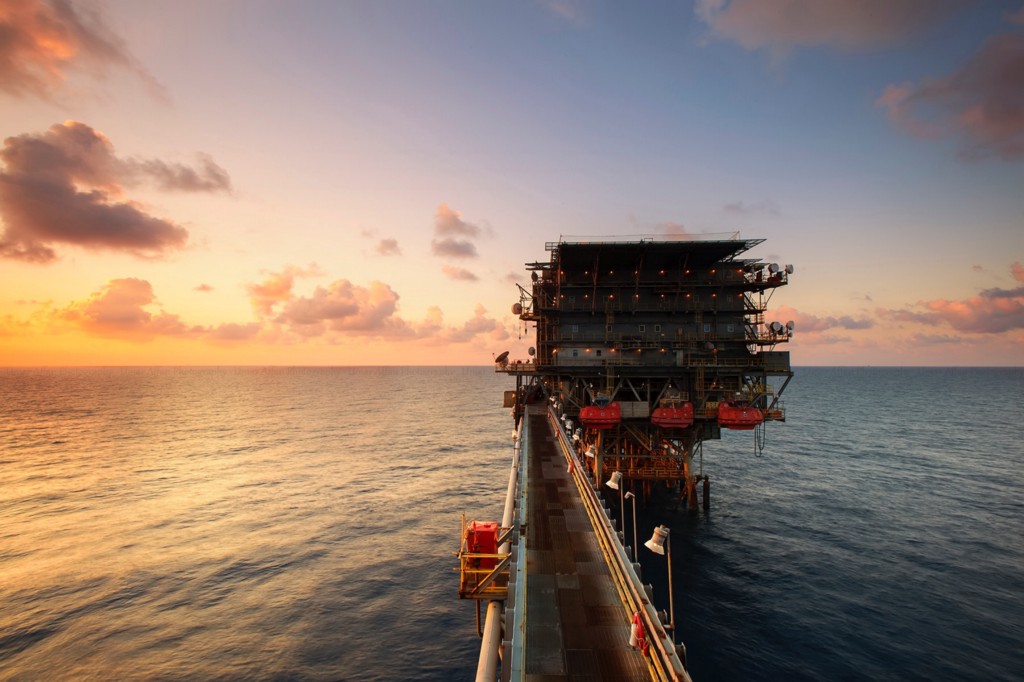
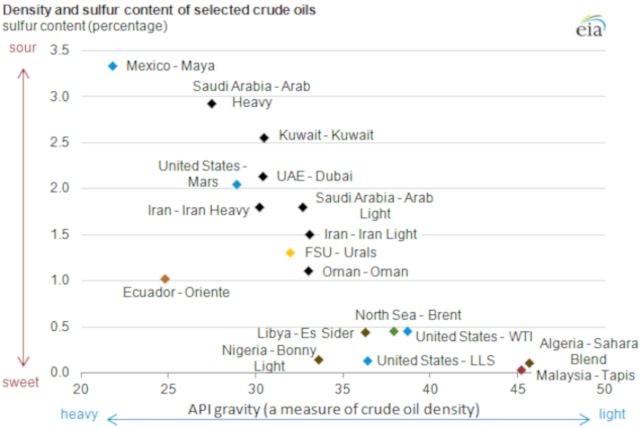

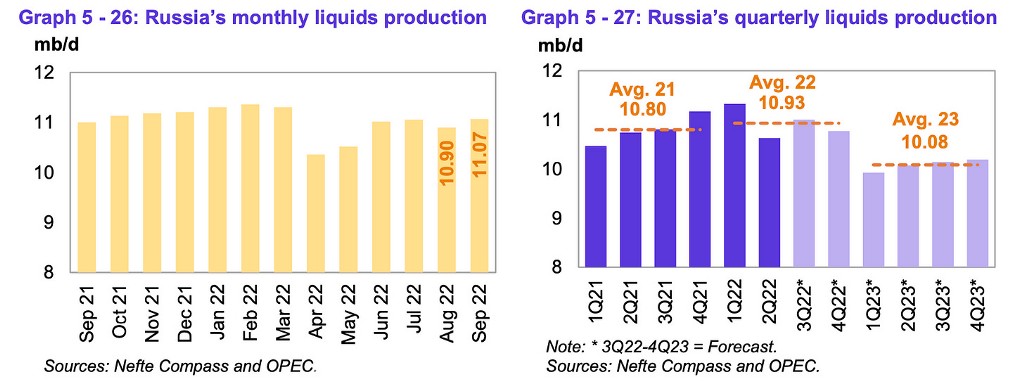
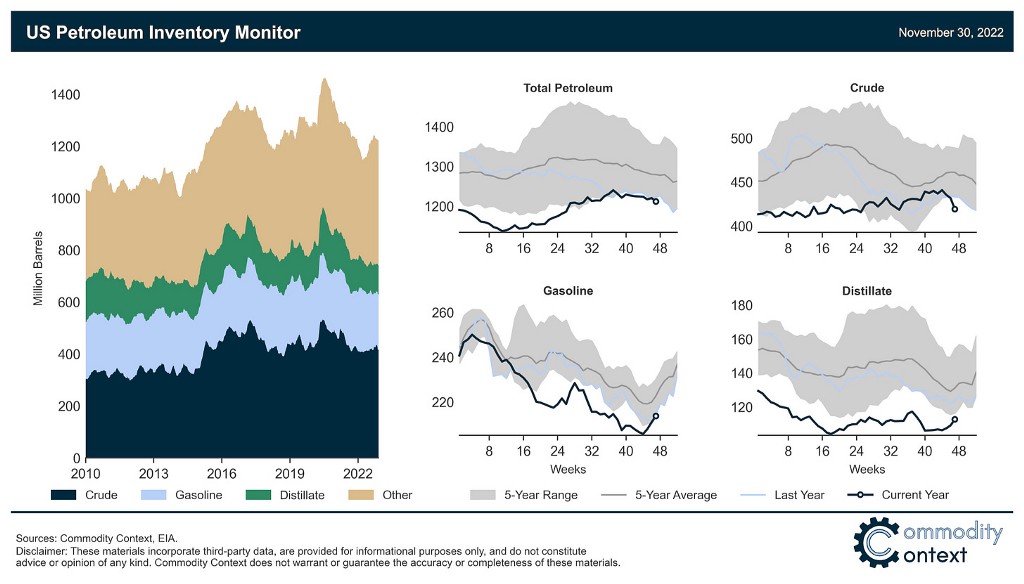
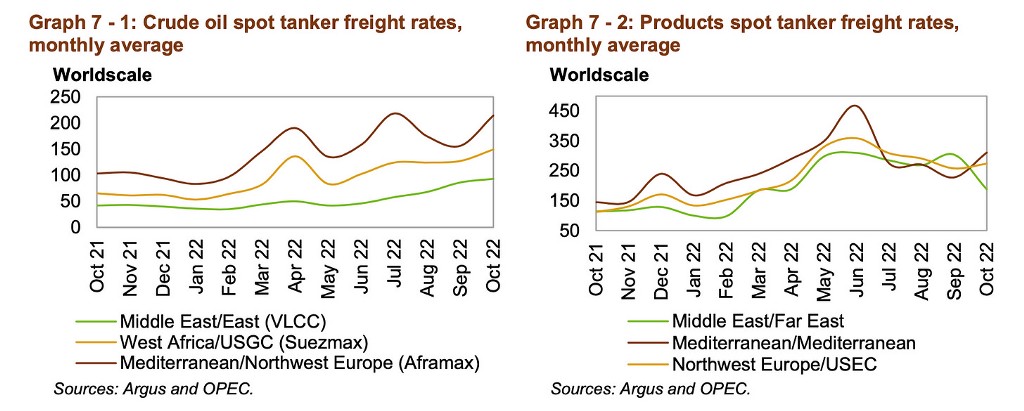
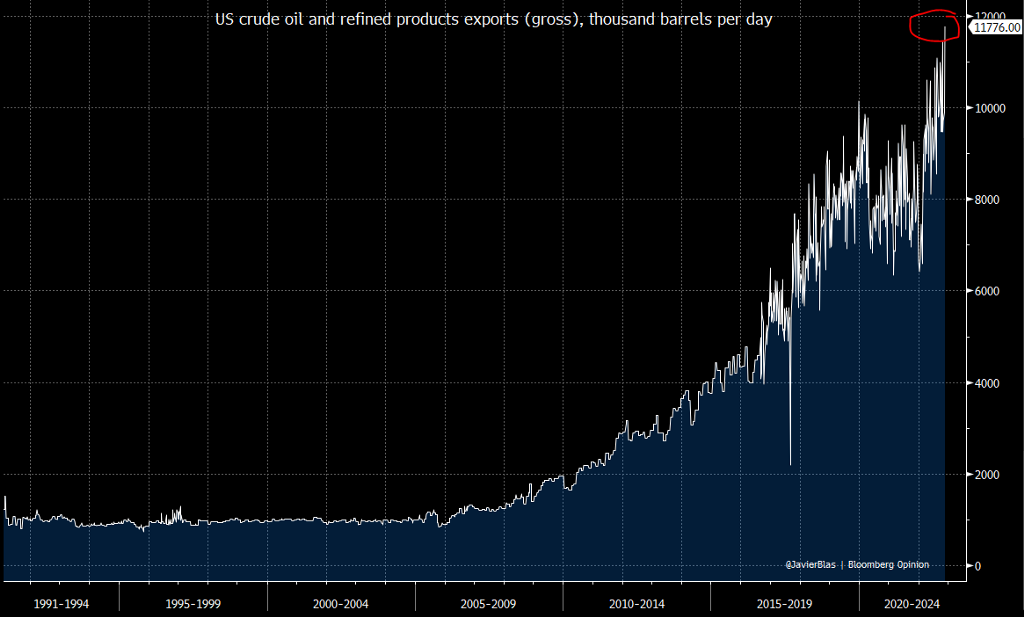

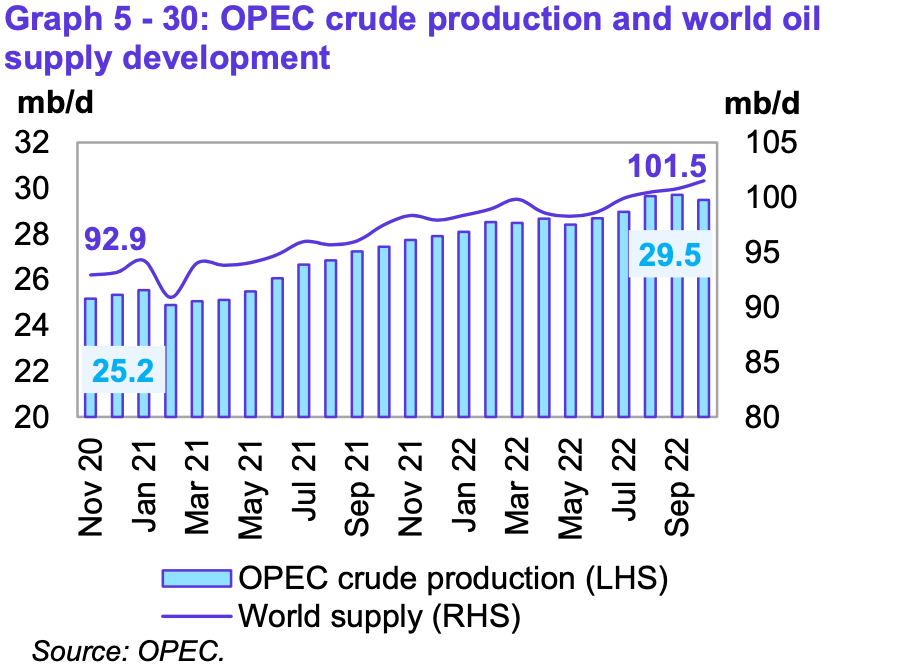
Comments